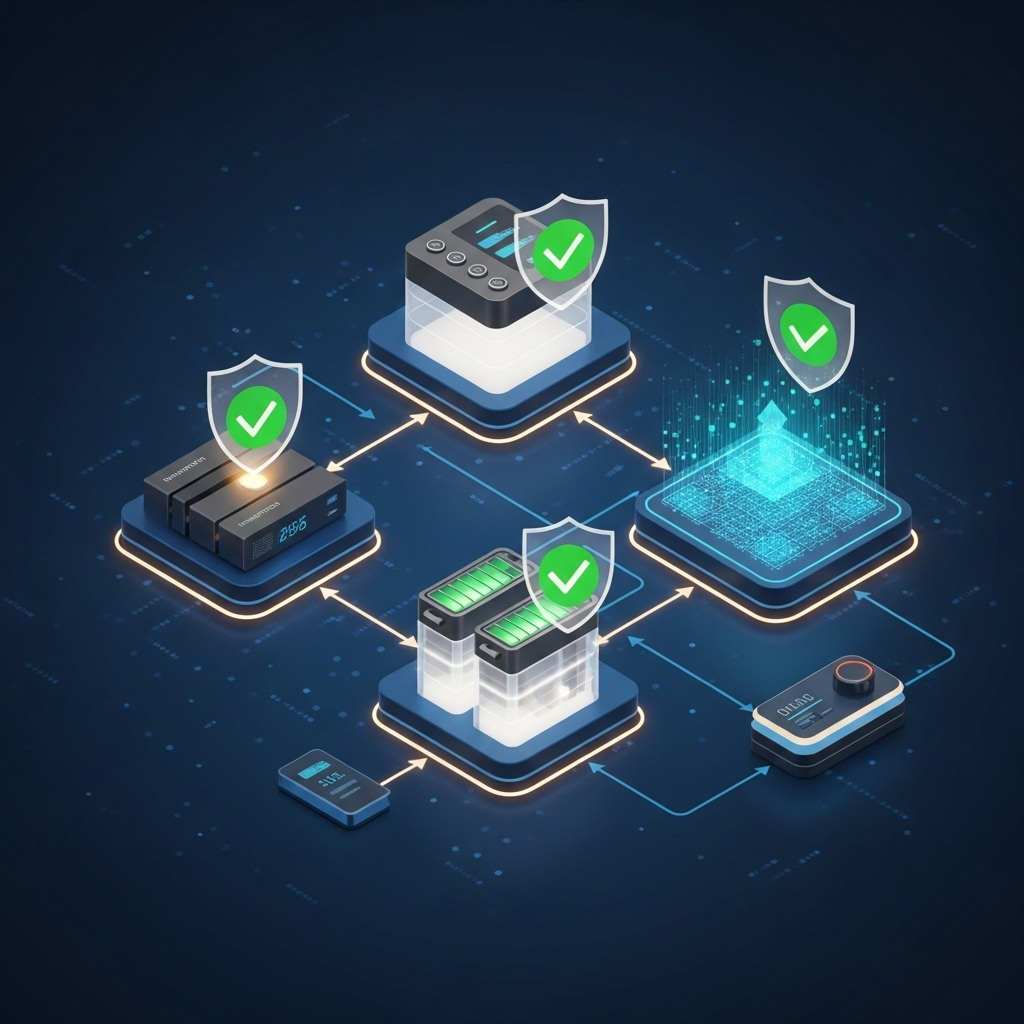Managing an off-grid energy system presents unique challenges. For properties far from the grid, energy independence is a powerful asset. Yet, this remoteness can also create significant hurdles for system maintenance and updates. Every time a technician needs to visit a site, it involves travel, time, and expense—a process known in the industry as a 'truck roll'. Modern energy solutions now offer a more efficient approach through Over-the-Air (OTA) updates, drastically reducing the need for these costly site visits.
The High Cost of Traditional Off-Grid Maintenance
For years, the standard procedure for fixing software bugs or upgrading inverter firmware involved sending a qualified technician to the physical location. This model, while necessary, is burdened with inefficiencies that impact both service providers and system owners.
Understanding 'Truck Rolls'
A 'truck roll' is the dispatch of a technician to a customer's site. The direct costs are easy to identify: the technician's hourly wage, fuel expenses, and vehicle maintenance. For a site that is several hours away, these costs can quickly accumulate. Indirect costs add to the burden, including potential system downtime while waiting for service and the associated loss of energy production. For a home or farm that relies entirely on its solar installation, this downtime is more than an inconvenience.

Common Issues Requiring Site Visits
Many problems that necessitate a site visit are not hardware failures. They are often software-related issues that can be resolved with a simple patch or configuration adjustment. This includes updating firmware to improve efficiency, modifying charging parameters for a new battery bank, or fixing minor operational bugs. Each of these traditionally required a physical presence, turning a potentially quick fix into a lengthy and expensive operation.
The Power of OTA Updates and Remote Monitoring
The combination of remote system monitoring and OTA update capabilities changes the entire maintenance paradigm. It shifts the process from a reactive, manual model to a proactive, automated one.
What Are OTA Firmware Updates?
Over-the-Air firmware updates are the wireless delivery of new software, firmware, or configurations to devices like solar inverters and energy storage systems. It functions much like the updates you receive on a smartphone. The manufacturer or service provider can push an update remotely, which the device then downloads and installs automatically. This process eliminates the need for a technician to physically connect a laptop to the equipment.
How Remote Monitoring and OTA Work Together
Remote monitoring provides the necessary visibility into a system's health and performance. Technicians can view real-time and historical data, diagnose issues, and identify the need for an update or adjustment. *This aligns with principles outlined by the International Energy Agency in its System Integration of Renewables report, which emphasizes that system operators require both visibility to assess a system's state and the tools to act on that information.* Once a problem is diagnosed remotely, an OTA update serves as the tool to implement the solution, delivering a fix directly to the inverter without anyone having to leave the office.
A Comparative Analysis: Manual vs. OTA Updates
To illustrate the difference, consider a common scenario: a firmware update is released to improve the charging algorithm of a hybrid inverter, enhancing the lifespan of its connected LiFePO4 batteries.
The Scenario: An Off-Grid Farm
Imagine an off-grid farm located 150 miles from the nearest service center. The solar installation is critical for running irrigation pumps and other essential equipment. The inverter manufacturer releases a critical firmware update to optimize performance during periods of low solar irradiation.
Cost and Time Breakdown
The advantages of an OTA update become clear when the costs and logistics are compared directly.
| Metric | Manual Update (Truck Roll) | OTA Update |
|---|---|---|
| Technician Labor | 4-6 hours (including travel) | 15-30 minutes (remote) |
| Travel Costs (Fuel, Vehicle) | $100 - $200+ | $0 |
| System Downtime | 1-2 hours during the visit | 5-10 minutes for reboot |
| Update Speed | Days (scheduling required) | Immediate |
| Estimated Total Cost | $300 - $500+ | Minimal (staff time) |
Enhancing System Performance and Security
OTA updates are not limited to fixing bugs. They are a powerful tool for delivering performance enhancements, enabling new features, and deploying critical security patches. As renewable energy systems become more connected, maintaining robust security is paramount. *The International Renewable Energy Agency (IRENA) notes in its publication, Grid Codes for Renewable Powered Systems, that software updates are essential for preventing performance degradation over time.* Regular, seamless updates ensure the system operates at its peak potential and remains secure against emerging threats.
Practical Implications for Energy Independence
The ability to remotely manage and update off-grid systems has profound implications for users who depend on them for their daily energy needs.
Maximizing Uptime and Reliability
By resolving issues in minutes instead of days, OTA updates significantly increase system uptime. This reliability is the cornerstone of true energy independence. Users can have confidence that their system is always running the latest, most efficient software without disruptive and lengthy service appointments. This proactive approach helps prevent minor issues from escalating into major problems.
Improving Long-Term Solar Storage Performance
The firmware governing an energy system plays a vital role in the health of its components, especially the batteries. Updates can refine charging and discharging algorithms to better suit specific conditions, which extends battery life and maximizes the return on investment. *Optimizing these operational parameters is crucial for system longevity. For a detailed examination of the metrics that define system health, you can review the factors explained in this ultimate reference on solar storage performance.* OTA updates ensure these critical components are always managed by the most advanced software available.
A Forward-Looking Perspective on Off-Grid Management
The shift away from mandatory truck rolls toward remote management represents a significant step forward for the off-grid energy sector. OTA updates deliver tangible benefits, including lower operational costs, improved system efficiency, enhanced security, and greater convenience for the end-user. This technology empowers property owners and service providers alike, allowing them to manage sophisticated energy solutions with unprecedented ease and effectiveness. It is a key enabler of resilient, reliable, and truly independent energy.
Frequently Asked Questions
Are OTA updates secure?
Yes, security is a primary design consideration. Reputable systems use encrypted communication channels and require secure authentication to initiate an update. This prevents unauthorized access and ensures the integrity of the firmware being installed.
What if an OTA update fails?
Modern inverters are designed with safeguards. If an update is interrupted or fails for any reason, the system will typically revert to the last known stable version of the firmware. This ensures the unit remains operational and avoids leaving the site without power.
Do I need a high-speed internet connection for OTA updates?
Not necessarily. Firmware files are generally small and highly compressed. They are optimized for the low-bandwidth connections often found in remote areas, such as satellite or cellular data services. A stable, low-speed connection is usually sufficient to download and apply the update successfully.





Leave a comment
All comments are moderated before being published.
This site is protected by hCaptcha and the hCaptcha Privacy Policy and Terms of Service apply.